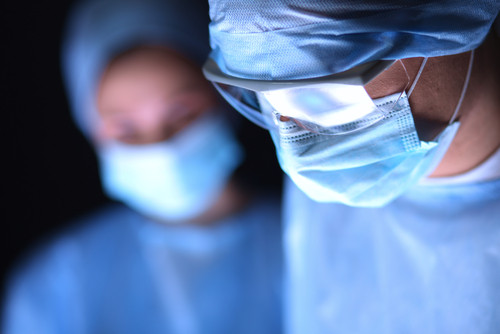Surgery
At SACIC we believe in hearing implant solutions and have confidence in technology to improve quality of life for people with hearing loss.

Prior to Surgery
Your Surgeon will assess your fitness for the procedure and ear anatomy in addition to any technical considerations applicable to the type of hearing implant being considered. They may also arrange a pre-operative appointment for you with your Anaesthetist and for any other relevant medical investigations required, such as CT and MRI scans.
Hospitals
SACIC's surgeons operate at either St Andrews Hospital, located on South Terrace in the city or at The Memorial Hospital in North Adelaide. In most cases your admission to hospital will be on the day of surgery.
The operation generally takes 1-2 hours and is performed under a general anaesthetic. Once anaesthetised and antibiotics have been given, a small incision is made behind your ear. This allows the surgeon access to the mastoid, a system air cells within the bone behind the ear that connects to the middle ear. By carefully following these air cell tracts it is possible to gain access to the middle ear space without disturbing the ear canal and ear drum. From this position, the Surgeon can see your cochlea and prepare for insertion of the electrode array. At completion of surgery the wound is carefully closed and a firm bandage is left on overnight.
Following surgery
Following surgery you can expect to stay in hospital for 1 to 2 days. Occasionally a longer stay may be required. You will not be discharged from hospital until you are well enough to go home. An X-ray is usually taken the day after your surgery to check the position of the implant. Cochlear Implant surgery is well tolerated by most people with minimal discomfort. Some people may experience dizziness, which is generally mild and short lived.
Upon discharge home, it is important to rest. We recommend you take time off work until your follow-up appointment with your Surgeon, approximately one week after surgery. Your Surgeon will make sure healing is occurring well and will remove the sutures.
Surgery for Connect and Attract Bone Conduction Implants generally takes less than an hour. It can be performed under a general or local anaesthetic depending on the type of implant chosen, your general health and the preference of you and your Surgeon. Once the site for the implant has been chosen, a small incision is made and the bone of the skull is exposed. A 3-4 mm deep hole is prepared for the implant to be screwed into the bone. Regardless of the type of bone conduction implant chosen, the key feature is osseo-integration, which is a process whereby living bone grows into the porous metal of the implant. This allows it to become part of the bone, which enhances the strength and sound conduction properties of the device.
For the Connect system an abutment protrudes through the skin for direct attachment of the sound processor. For the Attract system a magnet is attached to the implant prior to closure of the skin. A dressing is then applied.
Following surgery
Depending on the time of the operation, your individual circumstances and general health you may be discharged from hospital on the day of surgery or the following day. Discomfort is minimal and in most cases you will be able to return to normal activities within a few days. Post operative care will vary depending on the type of implant and will be explained by your Surgeon.
An appointment with your Surgeon will be made for you 7 to 10 days after your operation. At this time your wound is checked and the sutures are usually removed.
Bonebridge surgery is performed under general anaesthetic and takes approximately one hour to complete. A small incision is made behind the ear to expose the bone. A pocket is fashioned for the receiver and a well is created to contain the implant transducer. The implant is attached to the bone via two small screws, which transmit the sound waves through the bone to the inner ear. The wound is closed and a dressing is applied overnight.
Following surgery
Following Bonebridge surgery you will most likely stay in hospital overnight and be discharged the following morning. Discomfort is usually minimal.
Specific care instructions will be provided by your Surgeon, who will arrange to see you approximately one week after surgery for a review and removal of your sutures.
